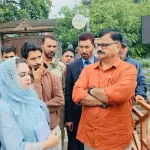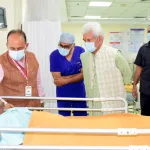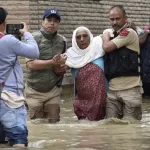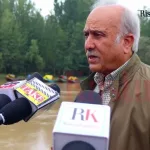The protest demonstrations going on in Katra by the pony and palanquin owners besides the shopkeepers against the announcement of Shree Mata Vaishno Devi Shrine Board’s Rs.250 crore ropeway project that will connect the Tarakote Marg to Sanji Chat along the 12 kilometre pathway leading towards the Holy Shrine of Shree Mata Vaishno Devi Ji is a matter of serious concern. It has led to the direct confrontation and clashes between the various stakeholders, administration and security personnel. There are reports of injuries to the security personnel who have acted with utmost restraint amid provocation sensing the sensitivity of the situation. The protestors had announced the 72 hour strike, which they had extended to 24 hours on Sunday. This has affected the pilgrimage and is causing inconvenience to the pilgrims visiting the Shrine. On Monday the tensions escalated when the CRPF vehicle tried to pass through the area that was occupied by the demonstrators. In this process the CRPF vehicle was damaged. There are also reports of pelting bricks on the law enforcement agencies. Even the top brass of police have termed the situation challenging, who are trying to resolve the tensions through talks with the protestors. It is pertinent to mention that the protestors are asking for the cancellation of the ropeway project or financial compensation for the loss of business that will befell them once the ropeway becomes operational. Lieutenant Governor (LG) Manoj Sinha who is also the chairman of the Shree Mata Vaishno Devi Shrine Board(SMVDSB) has said that the genuine concerns of the protestors at the Katra base camp will be addressed .He has informed that the Divisional Commissioner has held talks with the stakeholders to build the consensus on the ropeway project. There is a need to sensitise the stakeholders that upgrading of the pilgrim infrastructure at the Shrine of Shree Mata Vaishno Devi Ji will lead to value addition and transformation of the whole pilgrimage and the destination area. Thus creating alternate employment opportunities for the stakeholders must be encouraged. There are many religious places in India where traditional and modern pathways and ropeways are functioning in tandem. It has not only created alternate modes of reaching the holy places but allowed the stakeholders to improvise their livelihood opportunities. The need is to develop a comprehensive mechanism where the service providers are integrated into the new system and made secure. So that they are able to keep on facilitating the Yatris. Confrontation and violence at the holy place will bring negative publicity and will affect the reputation of the ponywalas and shopkeepers. They have been doing tremendous work for many years and have added to the value addition of the destination value at Katra. Their acts of desperation will go against them. SMVDSB must also internalise that all stakeholders must be consulted and a comprehensive formula be developed that addresses the concerns and apprehensions of all the stakeholders. Approximately one crore pilgrims seek the blessings of the Mata Vaishno Devi Ji every year and it leads to the multiplier effect in terms of economic and other benefits to the stakeholders and the host population in Katra. The need is to maintain this multiplier effect and take it to new levels. Both modern and traditional methods and modes of pilgrimage must be operational in tandem allowing the pilgrims to choose what suits them. Giving options of travel in terms of pilgrimage will generate more economy and more employment.
Row over the SMVD Ropeway

Sign Up For Daily Newsletter
Be keep up! Get the latest breaking news delivered straight to your inbox.
By signing up, you agree to our Terms of Use and acknowledge the data practices in our Privacy Policy. You may unsubscribe at any time.
Leave a Comment Leave a Comment
Stay Connected
Latest News
Recent Posts
- Rana reviews flood preparedness; Instructs Officers to remain on high alert
- LG Sinha visits SMVD hospital Katra, enquires about the health of injured devotees
- Srinagar Police Providing Frontline Assistance To Citizens Amid Ongoing Inclement Weather Conditions
- MLA Pampore Masoodi, SE Irrigation inspect Jhelum hotspots; sandbags placed to prevent breaches.
- Sakeena Itoo visits Lal Ded Hospital, B&J Hospital, Paediatric Hospital, SMHS Hospital Srinagar







